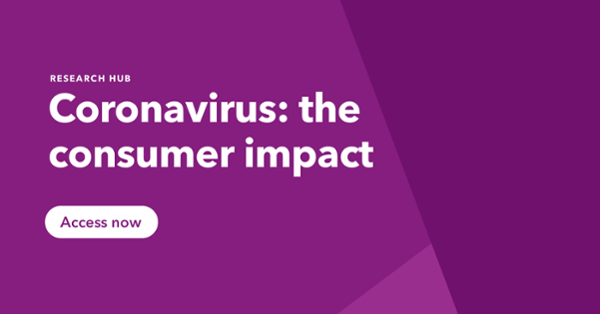Lockdown restrictions are beginning to ease in various parts of the world, a welcome move viewed by many as a sign of hope.
Consumers hope a semblance of normality will return to their everyday lives. For brands struggling to make sales, hope is akin to survival: the chance to move forward, win back customers and gradually recoup lost income.
We’ve been tracking how consumers’ mindsets, behaviors, and motivations throughout this period have changed. As with all our COVID-19 dedicated research the data and reports are free and ungated for everyone to access.
While shining a lens on the online shopping space in particular, it’s becoming clearer which trends will continue to gain momentum.
Our research shows 62% of consumers approve of brands continuing to sell non-essential products via their websites.
But in this new era of online shopping, whether or not consumers choose to buy from brands online is a different story.
Extracting key insights from the most recent coronavirus study we fielded in 17 markets around the world, we get to the heart of what retail brands should do to create a compelling online shopping experience that sees results.
Retail sectors stand to benefit from increased online shopping and a broadening ecommerce audience.
There are strong indications online shopping should see a long-term boost, hence, those who invest in it will see the biggest return.
40% of respondents in our 17-market study say they’ll buy more things online for home delivery after the pandemic, with global figures consistent by gender income and age.
If we break this down by audience segment:
- 45% of pre-exisiting ecommerce purchasers say they plan to spend more shopping online after the outbreak.
- 33% of those who weren’t purchasing online regularly prior to the outbreak plan to spend more time shopping online after the outbreak.
Though the biggest potential boost is for those accustomed to shopping online regularly, the increased intent among newer converts is still sizable.
Consumers are seeing the benefits of online shopping.
In contrast, only 9% of consumers say they’ll start visiting shops ‘immediately’ once they reopen, with almost half saying they won’t visit at least for some or a long time.
A wide range of categories can be expected to benefit from this increase in online shopping; groceries, household essentials, clothes, and personal care products, are set to see the greatest demand. For each of these categories, around 3 in 10 say they are now more likely to order these online for home delivery or in-store pickup.
Cosmetics, personal electronics, and smartphones could also benefit significantly (all scoring over 20%).
While some consumers might have been driven to this behavior through necessity or boredom initially, we’re seeing a broadening of the ecommerce audience and a diversification of items being browsed and purchased.
What’s more, about a quarter want to spend more time browsing online in advance of visiting a store, suggesting that “webrooming” will see an increase at least in the short-term (with a consequent decrease in “showrooming”, whereby consumers browse in-store before looking for the best price online).
By implementing the biggest consumer drivers, brands can elevate their online appeal.
In a pre-coronavirus world, footfall in physical stores may have meant more to brands than strengthening their presence in the ecommerce space.
But, with consumers placing more value on shopping online and planning to continue in that vein when things return to normal, it’s crucial for brands to remain competitive – regardless if consumers’ attention migrates from physical to virtual stores.
Staying ahead of the competition means knowing what consumers respond to when it comes to retail.
This means not only having an online offering to match your offline one, but investing heavily in the things consumers appreciate.
For instance, in research undertaken in the U.S./UK in early April, it was found that millennials display a much stronger reliance on using online channels to make food purchases than other generations; whether that’s takeout deliveries (36%), grocery shops (35%) or meal subscription services (10%). What’s more, they’re also influenced by personalization in product recommendations – more than any other cohort.
But what else matters to consumers?
Reliable delivery has risen in importance.
Compared to before the outbreak, 51% of consumers cite reliable delivery as having become more important to them. In fact, reliability considerably out-ranks speed; consumers would rather have certainty than instant delivery.
Consumers clearly favor the option to have goods delivered to them.
For those planning to increase their online shopping, home delivery is around twice as popular as in-store collection. What’s more, 51% of all consumers say free delivery will become even more important to them after the outbreak.
Convenience will be a big driver to this, but as we’ve seen elsewhere, safety is paramount too: significant minorities want to reduce the time they spend inside stores as well as visit stores less frequently.
The appeal of promotions and discounts is strong.
The outbreak has had an effect on many consumers’ ability to regularly earn money. In consequence:
- 8 in 10 consumers plan to delay big purchases.
- 71% of consumers approve of brands producing lower-cost versions of their products.
- Almost a third of consumers say they’ll wait for products to be on promotion or on sale.
While intent to start purchasing again differs among individuals, a significant portion are waiting for financial support from brands in order to feel comfortable doing so.
It’s a similar story for the luxury items we track (e.g. designer clothes, shoes, fragrances). Those who’ve delayed such a purchase are more likely to wait for a promotion than take any of the other actions we asked about.
The attractiveness of brands offering promotions transcends age, income, and gender. This shows value-for-money in the post-covid landscape will be front of mind for consumers, and acting on this knowledge can be used to galvanize loyalty and encourage spending.
Regional data is key: country-by-country variations shouldn’t be overlooked.
In Canada, Ireland, and New Zealand, for example, there’s particular support for local or independent businesses.
While in Germany, we see a much higher than average figure for supporting businesses that a consumer has bought from previously. For these reasons, local nuances should be taken into account when crafting a strategy which aims to entice consumers to buy online.
Brand messaging that acknowledges brands’ understanding of its consumers at a local level will set brands apart from others.
There’s a green light for advertising, but brands should focus on offering value.
In times of uncertainty, often the safest reaction is to come to a halt.
And while there are obvious reasons to freeze or shift advertising spend, many brands made the decision to do so based on sentiment – because it didn’t feel ‘right’ to carry on as normal.
In reality, our data paints a very different picture from what is largely assumed by the marketing industry. Our research shows almost no consumer concern about brands advertising at this time.
85% of consumers either approve of, or are impartial to, carrying on as normal – just 10% somewhat disapprove and 5% strongly disapprove.
In particular, financially-oriented advertising activity – geared around providing increased value for money – is where brands really stand to win in the eyes of their customers.
81% of consumers strongly or somewhat approve of brands running promotions, offers, or loyalty perks for customers.
It’s also emerged in our research that brands who’ve demonstrated they’ve helped people during the outbreak could have a leg up in terms of their ability to resonate with consumers in future.
We’ve charted the type of behavior consumers expect from brands amid the pandemic with great interest.
With consumers holding brands to account more than ever before, brands should proceed mindfully as far as advertising is concerned. It is, after all, a highly sensitive market. But switching advertising off completely, with arguably the most engaged audience in history, is a short-sighted decision that could erode decades of hard-won brand equity.
Meeting consumers’ needs trumps all.
Increased engagement with ecommerce during the pandemic has demonstrated to people that online shopping is a feasible and convenient option for a wider selection of products.
But with the market not what it once was, every retail brand looking to boost its online earnings needs to walk in its customers’ shoes first, then act.
Staying close to consumers will be a critical differentiator, and a key selling point:
56% of consumers say those brands that best meet their needs will influence the businesses they buy from after the outbreak.
Customers who can will spend money, but it’s brands that prioritize their commitment to their audience who’ll stand out the most.
Though certain purchases could be delayed for some time, brands need to remember their ability to create a compelling offering online and inspire consumers to make a purchase further down the line is still in their power.
As consumers have eluded to, there is a road to recovery.
With retail brands hinging on future online revenue, those most in tune with what their customers want – not before COVID-19, not at its peak, but now, in this ‘new normal’ – will be first in line to rebuild profits and prove their worth in more ways than one.





.webp?width=495&height=317&name=pink_thumb_graphs%20(1).webp)
.webp?width=495&height=317&name=pink_thumb_letter%20(2).webp)
